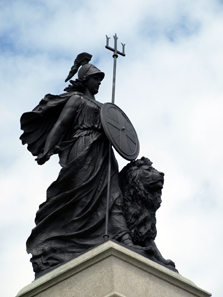September 10, 2013 – When Romans once represented subdued peoples they generally chose to give them a female representation. Hence the British Isles featured on Roman coins as a female warrior to remember how much effort it had cost to conquer this country. In 1672 Britannia appeared for the first time again on coins in Britain and since that time has featured consistently on British coins. One should think Britons have become quite accustomed to this woman in the meantime.
However, a recent research by The Royal Mint has shown that one in four British adults do not recognise Britannia. Instead they guess names which one might wonder what these figures could ever have a reason to appear on British coins. 12 per cent call Britannia Boadicea, a bellicose queen of old, 5 per cent believe her to be a young Queen Victoria, 4 per cent say it is Minerva, the Roman goddess of wisdom and craftsmanship. And then there are even those 2 per cent or some 1 million people who see her as Joan of Arc, 450,000 people believe that she is Queen Elizabeth I. And more than 180,000 imagine to recognise previous Prime Minister Margaret Thatcher in this image.
This is no human statue but one out of metal in Plymouth. We hope that it may nevertheless educate people passing by with some inscription to prevent them from taking her for Margaret Thatcher or Joan of Arc. Photo: Mageslayer99 / http://creativecommons.org/licenses/by/3.0/deed.en
The Royal Mint therefore has started an educational campaign. So-called ‘human statues’ in London, Cardiff and Glasgow sit around in the likeness of Britannia telling the passers-by the story and importance of Britannia.
The Royal Mint informs about this research and their campaign here.
On new high-denomination coins Britannia still appears as you can see on these products of The Royal Mint.




